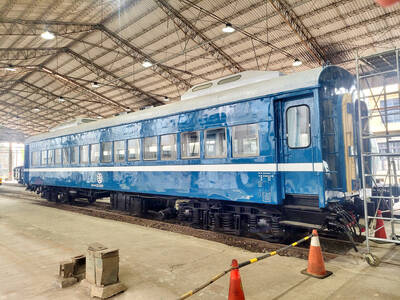
For decades, Taiwan Railway trains were built and serviced at the Taipei Railway Workshop, originally built on a flat piece of land far from the city center. As the city grew up around it, however, space became limited, flooding became more commonplace and the noise and air pollution from the workshop started to affect more and more people. Between 2011 and 2013, the workshop was moved to Taoyuan and the Taipei location was retired. Work on preserving this cultural asset began immediately and we now have a unique opportunity to see the birth of a museum. The Preparatory Office of National Railway Museum is responsible for restoring — or simply preserving — the workshop grounds and opening them up to the public. The only part regularly open at the moment is the employee bathhouse. With its exhibits and interior restoration, it feels more museum-like than the rest of the grounds, where the piles of disused equipment, tools and materials, as well as the smell of steel and oil, make it seem more like a working factory where the employees just happen to have the day off. This part needs to be cleaned up and made safer before it can be opened to the public on a regular basis, but occasional guided tours do allow a glimpse into this space as it is now. THE BATHHOUSE Visitors enter the museum through the west wing of the employee bathhouse. This was the earliest part of the Taipei Railway Workshop to be designated as a historic site, for both its architectural and its cultural significance, back in 2000 when the workshop was still in use. This wing features an exhibit on art deco style buildings throughout Taiwan from the 1930s. The bathhouse itself was built in this decade and in this style, so the exhibit serves to place
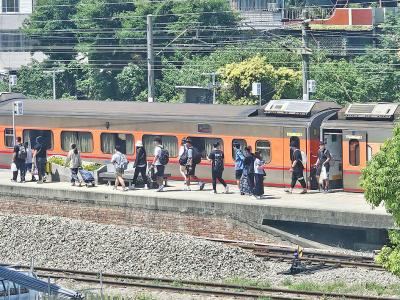
Taiwan railway ticket prices may increase for the first time in 30 years, as the Taiwan Railway Corp (TRC) is proposing an average fare increase of 26.8 percent to its board of directors this afternoon. According to the Legislative Yuan, a reasonable rate of return for TRC ticket revenue is 3 to 5 percent. However, critics have raised concern that this rate would cause ticket prices to rise too much, significantly impacting the public. The TRC plans to set the return rate at no lower than 0.36 percent, with the average fare to be increased by 26.8 percent. The company said it plans to adjust fares proportionally based on distance traveled, with short-distance fares increasing more and long-distance fares increasing less. For example, the fare for the Tze-Chiang Limited Express between Taipei and Kaohsiung would increase from NT$824 to NT$975. Meanwhile, the fare for the Tze-Chiang express from Taichung to Taipei would increase from NT$375 to NT$501. A local train from Taipei to Banciao District (板橋) would cost NT$22, while the Tze-Chiang express for the same journey would cost NT$34. A local train from Taipei to Hualien would increase from NT$283 to NT$375, and the Tze-Chiang express for the same journey would increase from NT$440 to NT$583. An announcement would be made if the fare adjustment plan is approved by the board of directors this afternoon, TRC chairman Du Wei (杜微) said. The plan would be designed with three key considerations: affordability for short-distance passengers, competitiveness for medium-distance routes and retention of long-distance passengers, Du said.
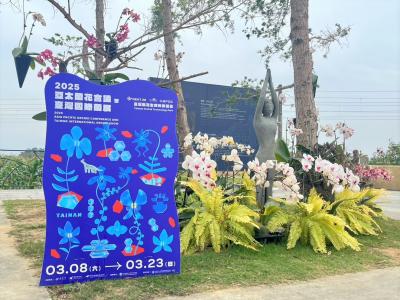
This year’s Asia Pacific Orchid Conference and Taiwan International Orchid Show are to run from March 8 to 23 at the Taiwan Orchid Technology Park in Tainan’s Houbi District (後壁). The conference host rotates between different member cities in the Asia-Pacific region every three years and is to return to Tainan for its 15th edition for the first time since 2004. The event is to coincide with the Taiwan International Orchid Show in Tainan's Sibei Township (溪北), Tainan Mayor Huang Wei-che (黃偉哲) said. The joint event would not only showcase the diversity and conservation of orchids, but hollyhocks, Mexican lilacs, the red silk cotton tree, the orchid tree, the pink shower tree, the chinaberry tree and the pink trumpet tree would also be in bloom, he said, welcoming flower enthusiasts to visit Tainan to experience the beauty of this year’s blossom season. The event would also display innovative floriculture designs and host lectures from experts, networking events and interactive experiences, the Tainan Tourism Bureau said. The orchid show is to be hosted in Houbi, with the main event at Taiwan Orchid Technology Park. Two satellite locations, the Arwin Therapy Garden which opened last year and the century-old Yichang Rice Mill with its historic Jingliao Old Street, are to serve as additional orchid display sites. Presale tickets are available now, currently priced at NT$200. Ticketing information can be found on the event’s Web site.
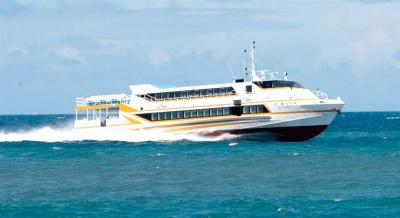
Ferry operators are planning to provide a total of 1,429 journeys between Taiwan proper and its offshore islands to meet increased travel demand during the upcoming Lunar New Year holiday, the Maritime and Port Bureau said yesterday. The available number of ferry journeys on eight routes from Saturday next week to Feb. 2 is expected to meet a maximum transport capacity of 289,414 passengers, the bureau said in a news release. Meanwhile, a total of 396 journeys on the "small three links," which are direct ferries connecting Taiwan's Kinmen and Lienchiang counties with China's Fujian Province, are also being planned to accommodate travel needs during the nine-day holiday. During the Jan. 25 to Feb. 2 period, should any adverse weather or other force majeure affect ferry services, operators are required to publicly announce the information through various media platforms, the bureau said, adding that it would also provide real-time updates on ferry schedules on its official Web site. Separately yesterday, Taoyuan International Airport Corp said that flight passenger traffic is expected to peak starting on Monday next week as the Lunar New Year holiday approaches. During the longest holiday of the year, Feb. 2 (the fifth day of the Lunar New Year and the day before work resumes) is anticipated to see the highest travel volume, with nearly 150,000 passengers, the company said in a statement. As such, a total of 14 chartered flights and 103 extra flights would be added to serve more than 1.59 million passengers during the 11-day period from Friday next week to Feb. 3, the company said.
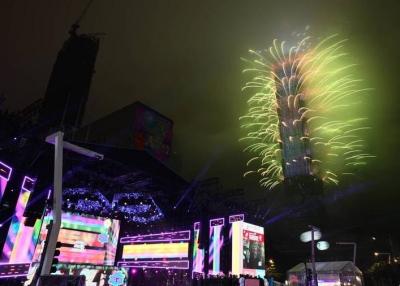
The Taipei MRT is open all night tonight following New Year’s Eve festivities, and is offering free rides from nearby Green Line stations. Taipei’s 2025 New Year’s Eve celebrations kick off at Taipei City Hall Square tonight, with performances from the boy band Energy, the South Korean girl group Apink, and singers Gigi Leung (梁詠琪) and Faith Yang (楊乃文). Taipei 101’s annual New Year’s firework display follows at midnight, themed around Taiwan’s Premier12 baseball championship. Estimates say there will be about 200,000 people in attendance, which is more than usual as this year’s celebrations overlap with A-mei’s (張惠妹) concert at Taipei Dome. There are three shuttle buses in the area heading toward MRT stations that run from midnight to 1:30am. The first leaves from the Renai Road and Yanji Street intersection, heading toward Taipei Railway Station. The second leaves from the Guangfu S Road and Wenchang Street intersection next to Keelung Road Sec 2, heading toward Gongguan Station. The third leaves from the Songde Road and Xinyi Road Sec 6 intersection, heading toward Jingmei and Muzha stations. There is one more shuttle bus running from midnight to 2am that leaves from the Guangfu S Road and Zhongxiao E Road intersection, heading toward Nanjing Sanmin Station. The Taipei MRT runs for 24 hours on New Year’s Day, except for the Xiaobitan and Xinbeitou lines, which close at midnight. As most people took the Blue and Red lines in previous years, it is recommended to walk or take a shuttle bus to Nanjing Sanmin or Taipei Arena stations to take the Green Line. Catching the Green Line from either of those stations is free from midnight to 6am. The Taoyuan MRT is to run for 41 consecutive hours from 6am today to 11pm tomorrow. Starting from 5pm today, 33 YouBike stations in the Xinyi area are to be closed, with 22 more stations closing
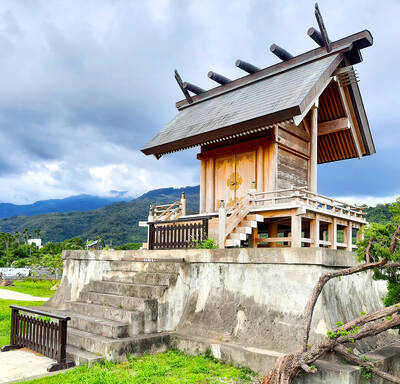
One of my more inexplicable ambitions is to board or alight from a train at every one of the 240 Taiwan Railway Corp stations that offer passenger services. I reckon I’ve still got over 100 to go, but if I live to a ripe old age, I might complete the list. Anyhow, this means that when I took a train to Luye Township (鹿野) in Taitung County a few weeks ago, I felt as if I’d accomplished something as soon as I’d passed the ticket gate. The station is less than 100m east of Highway 9, whereas the most interesting parts of the township lie to the west of this busy road. Rather than rent a bike, which is what many visitors do, I decided to hoof it. Having been there a few times before, I had no interest in going up to Luye Highland (鹿野高台), one of Taiwan’s premier paragliding and ballooning venues. Instead, I wanted to take a proper look at Longtian Village (龍田村), immediately south of the highland. COLONIAL ERA Longtian’s road grid was laid out 1912-1915 by Taiwan Sugar Company (not the current state-owned Taiwan Sugar Corp, but a Japanese-owned sugar enterprise active during the 1895-1945 period of colonial rule). The company was acting at the behest of the colonial authorities, who’d been directed by their masters in Tokyo to prepare sites for the arrival of migrants from Japan’s Home Islands. In the early 20th century, as the country industrialized, the simultaneous mechanization of Japanese agriculture caused rural unemployment. The government decided that sending some of the jobless and landless to Taiwan would reduce the risk of unrest at home while strengthening Tokyo’s hold over a colony where armed resistance was an ongoing problem. The designated settlers’ villages were all in the east, and none of them lived up to
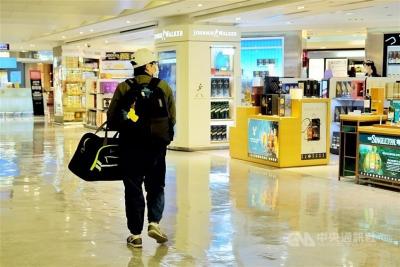
The Ministry of Finance said it is planning to increase the allowance for duty-free alcohol brought into the country by travelers for their personal use from the current 1 liter to 1.5 liters. When the regulation is changed, it would take effect in the first quarter of next year, a ministry official said recently. Currently, the allowance for duty-free alcohol for personal use is 1 liter per incoming traveler, with no limit on the number of bottles and no requirement for customs declaration. Passengers who exceed the duty-free limit must declare the alcohol, otherwise they risk confiscation and fines at customs, according to the current regulations. The ministry is now planning to increase the duty-free allowance, taking into account the relevant regulations in other countries, tax implications, and opinions in Taiwan's alcohol and import industries, the official said. According to a recent Customs Administration survey, the duty-free allowance for alcohol in Thailand, Indonesia, Hong Kong and Macau is 1 liter per inbound passenger, while in China it is 1.5 liters, and in South Korea and Singapore it is 2 liters. In Vietnam, the duty-free limit is 1.5 to 3 liters, depending on the alcohol percentage, while Japan allows three bottles of less than 760ml each, which is about 2.28 liters in total. In the US and Australia, the duty-free allowance for alcohol is 1 liter and 2.25 liters respectively. The UK allows incoming travelers to bring in a maximum 42 liters of duty-free beer and 18 liters of grape wine. If Taiwan raises its duty-free limit for alcohol to 1.5 liters, the total tariffs, business taxes, and tobacco and alcohol taxes would drop by millions of New Taiwan dollars per year, the ministry said, citing an estimate of 12 million incoming travelers annually. The ministry official said it had been considering increasing the duty-free allowance to 2 liters, but
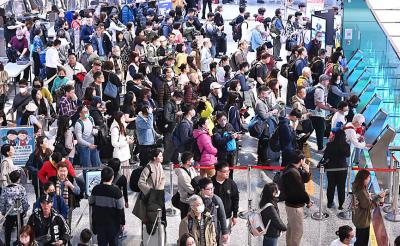
The Ministry of Transportation and Communications (MOTC) is to continue to promote tourism to transit passengers at Taiwan Taoyuan International Airport by offering a limited number of guided group tours to the Taoyuan Lantern Festival in February, it said today. The Taoyuan airport last year received a record number of transit passengers at 6.37 million, constituting 12.5 percent of all passenger traffic, the ministry said. The Legislative Yuan’s Transportation Committee invited the ministry to give a specified report on how to travel experiences for transit passengers. According to the report, pre-COVID-19-pandemic arrivals to Taoyuan airport were 48.7 million, with 5.65 million transit and layover passengers constituting about 10 percent. However, once national lockdowns were lifted last year, transit and layover passengers increased by 13 percent from pre-pandemic levels, comprising 12.5 percent of overall passenger volume, the ministry said. The highest percentage of transit passengers last year were from North America, at 39.8 percent, followed by Southeast Asia and South Asia at 36.9 percent and East Asia at 7.1 percent, showing the importance of the Taoyuan airport as an international transport hub for passengers traveling between North America and Southeast Asia, it said. The Tourism Administration has previously targeted passengers with a layover in Taiwan between seven and 24 hours and holding visas or visa exemptions for half-day tourism packages. It offers four-hour guided group tours to Taipei, Taoyuan or New Taipei City, as well as Taoyuan Metro tickets and travel recommendations to independent tourists, the MOTC said. From May last year until last month, 14,692 international transfer passengers utilized the scheme, with 60 percent, or 8,807 passengers, choosing group tours and 40 percent, or 5,885 passengers, choosing independent travel, it said, adding that most came from the US, Canada, the Philippines, Germany and Australia. Special day and night tours would also be offered for transit
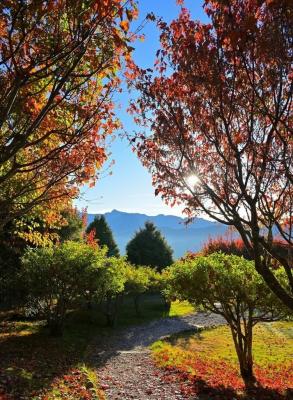
The peak season for viewing maple tree foliage in the Alishan National Forest Recreation Area is to last from now until New Year's Day, Forestry Bureau officials said today. The officials from the Chiayi branch of the bureau said that the approaching cold air mass was expected to help the maple foliage continue to transform into spectacular colors. The best areas include the Ogasawara Viewing Platform (小笠原觀景平台), Ciyun Temple (慈雲寺), Zhaoping Station (沼平) and Duigaoyue Station (對高岳), they said. They said that about half of the maple foliage visible from the Ogasawara Platform has turned red, while the maples near Zhaoping and Duigaoyue stations are about 40 percent red. At Ciyun Temple, the green maples have just begun to change and about 10 percent have red hues, they said. Huang Yuan-ming (黃源明), a retired elementary teacher devoted to documenting Alishan's beauty, said on his "Alishan: Strolling Above the Clouds" Facebook page that as well as the trees in the forest park, the green maples along the Shizilu section of Taiwan Provincial Highway No. 18 are a sight to behold. "From the 79k tunnel to the 83.5k section, the roadside green maples are beautifully vibrant," he wrote. Huang added that in the 88k and 90.8k sections, the trident maples are changing daily, showcasing shades of yellow, green and red. Additionally, the maple trees along Highway No. 18 between Alishan and Tataka have already turned red, he said.
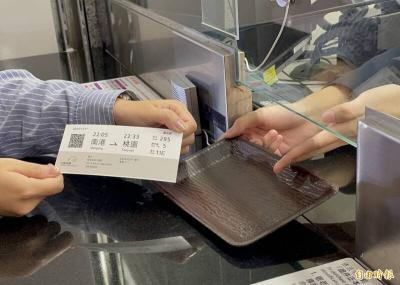
New high-speed rail (HSR) paper tickets using QR codes and enlarged fonts are on sale from today at ticket counters in Nangang, Banciao and Chiayi stations, before being rolled out nationwide to replace the magnetic-strip system by the end of 2026, Taiwan High-Speed Rail Corp (THSRC) spokesperson Calvin Yen (顏昭立) said today. The new ticket is double the size with lettering enlarged 1.5 times for the convenience of elderly passengers, Yeh said. QR codes are to replace the original magnetic-strip paper tickets, saving 98 percent of the energy originally used per ticket at station barriers, he added. According to THSRC statistics, electronic tickets — including periodic tickets, return tickets, EasyCards and i-Passes — were used by HSR passengers a total of 28.11 million times, up 30 percent from 2022, he said. As HSR tickets become increasingly digitized, the paper tickets have been designed for ease of use for elderly passengers, featuring a clear monochromatic design with a QR code clearly printed on the left-hand side and enlarged characters for important information in the center such as destination and departure time, Yeh said, adding that seating information is displayed on the right side. The new tickets are to be issued at ticket counters at Miaoli, Tainan and Zuoying stations from Jan. 8, before being sold at all 12 stations on the HSR line in the first half of next year, he added. As for self-service ticket machines, the new tickets are to be available at machines in Taipei, Taoyuan and Changhua from Wednesday next week, and at Taichung, Hsinchu and Yunlin from Dec. 24, with other stations adding the new tickets to self-service machines beginning in 2026, he said. Until the end of 2026, both old and new versions of HSR tickets are to be accepted at all stations, he added. The
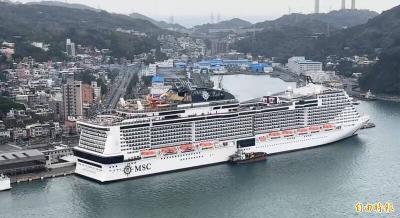
All of the nearly 2,000 passengers currently stranded on a cruise ship in Naha, Japan, are to return by Thursday, Minister of Transportation and Communications Chen Shih-kai (陳世凱) said today. Mediterranean Shipping Co’s (MSC) ship the MSC Bellissima had a malfunction, stranding it at the Okinawa port with 1,857 Taiwanese passengers on board. The Ministry of Transportation and Communications has coordinated with domestic airlines and the Japanese government to use larger aircraft and increase the number of flights, adding about 748 seats over today and tomorrow, Chen told legislators during a committee hearing at the legislature. With the help of additional charter flights, the ministry expects all affected travelers to return by Thursday, he added. Democratic Progressive Party Legislator Lee Kun-tse (李昆澤) said that although there are administrative procedures to overcome, the ministry should work efficiently to allow all passengers to return by tomorrow. While MSC has offered compensation for affected travelers, the costs of tickets and shore excursions are not the same, so the Tourism Administration should work with the Travel Quality Assurance Association to protect passengers’ rights, Lee added. MSC is to cover the ticket costs, Chen added. The MSC Bellissima, carrying 4,341 passengers, departed from Keelung on Wednesday last week for Okinawa, with planned stops at Miyako Island, Naha and Ishigaki Island. It was set to return to Taiwan on Sunday. Passengers who arranged their own transportation from Naha can claim compensation of up to US$400 if they traveled outside Japan and up to US$200 for domestic travel within Japan, the cruise operator said. A separate trip of 2,080 passengers scheduled to board the MSC Bellissima in Keelung on Sunday was canceled. The cruise operator said it had informed all those affected on Saturday. To compensate for the disruption, the operator promised full refunds to all impacted passengers. It would also provide a voucher worth up to
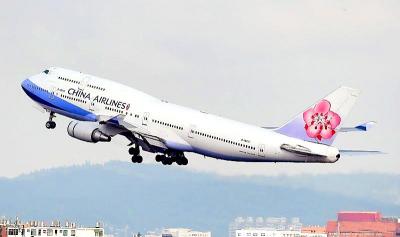
Taiwan-based China Airlines (CAL) is to prioritize adding direct flights to Prague and Vienna in the second half of next year due to increasing demand, CAL president Kao Shing-hwang (高星潢) said. During an interview in Hamburg, Germany, Kao said that CAL flights to Europe this year have been more than 85 percent full and that 80 percent of seats over the Christmas peak season have been sold. He added that the airline is now looking to increase the number of flights to the continent. The goal was to increase the number of flights to Prague from two to five per week in the second half of next year and to Vienna from four to six per week, he said. In total, CAL aims to have 30 flights to Europe weekly. However, adding more flights depended on when new aircraft were delivered, he added. CAL is the only airline that operates direct flights from Taipei to Prague. Since the launch of the flights last year, the occupancy rate has reached 90 percent. Kao said that as well as tourists, the route has also attracted business travelers from nearby cities, including the German cities of Nuremberg and Dresden. Taiwan Semiconductor Manufacturing Co recently set up a factory in the latter. CAL currently flies to six places in Europe from Taiwan: Amsterdam, Frankfurt, Vienna, London, Rome and Prague. It is the Taiwanese airline with the most destinations and direct flights to Europe. Overall, CAL has 82 aircraft in its fleet, with 560 flights per week.
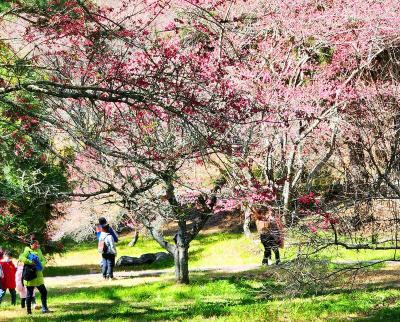
Shei-pa National Park Headquarters today said it is to begin accepting vehicle permit applications starting on Jan. 15 for people visiting the park for multiple days during the Wuling cherry blossom season. Single-day entry is to be prohibited this year, as the park aims to enforce traffic control measures and tighten entry checks to ensure the smooth operation of local homestays. As the Wuling cherry blossom season brings flocks of people and vehicles to the park every year, the Highway Bureau is to implement crowd control measures from Feb. 8 to 23, the agency said today in a news release. Shei-pa National Park, spanning Hsinchu County, Miaoli County and Taichung, is to comply in limiting the number of vehicles entering the park and assist Wuling Farm (武陵農場) with issuing permits, it said. Vehicle permits are not to be granted to single-day entry mountain permit holders this year, so all groups entering or exiting the park via Wuling Farm on a one-day permit, including the trailheads for Hsuehshan (雪山) and the Wuling Quadruple Mountain Trail (武陵四秀登山口), should use public transportation, the agency said. Multi-day hiking groups may only enter the park in a private vehicle once they have obtained the permit and may park at the Hsuehshan trailhead or the Wuling Lodge parking lot, it said. Previously, a small number of groups had applied for park entry permits and were issued vehicle passes with no intention of hiking or staying at the local guesthouses, having just come to see the cherry blossoms, which is a violation of the park’s rules during cherry blossom season and would result in a three-year ban from entering the park, it said. According to agency statistics, 24 people received the three-year ban last year and 28 so far this year. If hikers are no longer able to use their
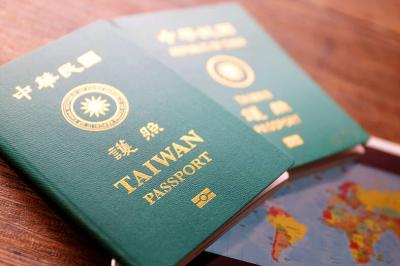
Taiwan’s passport ranked 34th in the world, with access to 141 visa-free destinations, according to the latest update to the Henley Passport Index released today. The index put together by Henley & Partners ranks 199 passports globally based on the number of destinations holders can access without a visa out of 227, and is updated monthly. The 141 visa-free destinations for Taiwanese passport holders are a slight decrease from last year, when holders had access to 145 destinations. Botswana and Columbia are among the countries that have recently ended visa-free status for Taiwanese after “bowing to pressure from the Chinese government,” the Ministry of Foreign Affairs said in August. Singapore has the top-ranked passport, with 195 visa-free destinations available to holders, followed by Finland, France, Germany, Italy, Japan and South Korea all tied at 192 destinations. Taiwan’s passport is tied with Peru for 34th in the world, staying in line with rankings over the past decade. In the list’s first edition in 2006, Taiwan ranked 55th in the world. It dropped to 69th in 2010, but has remained ranked in the 30s since 2015.
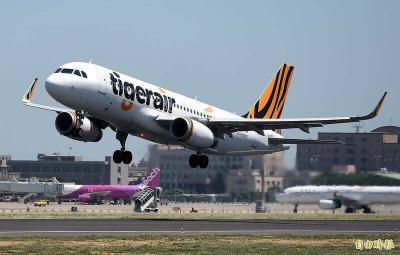
The first direct flight between Kaohsiung and Hokkaido is to launch on Jan. 21 next year, Tigerair Taiwan announced yesterday, along with discounted fares for early buyers. The first flight between Kaohsiung International Airport and New Chitose Airport serving Sapporo is to depart on Jan. 21, the budget airline said. Two flights are to run weekly on the route for the initial period, departing from Kaohsiung at 8am on Tuesdays and Saturdays, and returning from New Chitose at 1:55pm the same days, it said. To celebrate the new route, one-way tickets on the route are available for NT$3,899 from now until tonight at 11:59pm for flights between Jan. 21 and March 29, the airline said. More detailed information is available on the Tigerair Taiwan Web site. The Sapporo route is the airline’s 11th departing from Kaohsiung, adding to services between the southern city and Tokyo’s Narita Airport, Nagoya, Osaka, Okayama, Fukuoka and Okinawa in Japan; Seoul’s Gimpo airport in South Korea; Macau; and Da Nang and Phu Quoc in Vietnam.
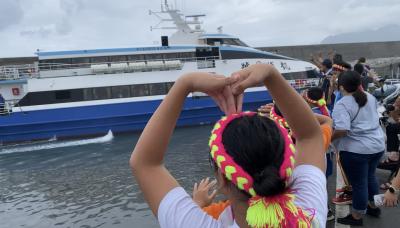
The first ferry operating between Taitung County’s Chenggong Township (成功) and Green Island (綠島) set off from Chenggong Fishing Port (新港漁港) today, bearing 101 passengers. The Kaisyuan No. 3 (凱旋三號), which can carry more than 300 passengers, was previously said to be fully booked. Many of the bookings were repeated, and some of the passengers canceled their bookings ahead of a looming typhoon, the operator said. One Green Island native who moved to Chenggong 60 years ago for marriage said the ferry makes it much easier to visit home. Many residents had moved away, including her own children, she said. It is a historic moment for Chenggong, another group of residents said. The ferry is expected to draw tourists from northern Taiwan, as passengers would also be able to see whales during the journey, Chenggong Mayor Hsieh Shu-chen (謝淑貞) said. Chenggong is closer to northern Taiwan than Fugang Fishing Port (富岡漁港), she said, adding that the ferry is expected to revive tourism while also serving locals.
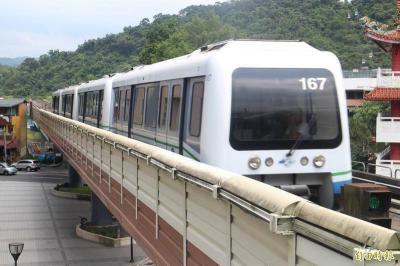
Discounted 72-hour Taipei Metro passes are to be offered to China Airlines passengers until Feb. 28 next year, the airline announced today. China Airlines passengers may present their boarding pass for a discount of up to 34 percent when buying a Taipei Metro 72-hour unlimited travel pass. The offer is available to international travelers on international flights bound for Taipei. Within seven days of arrival, travelers can present their boarding pass, passport and proof of flight payment at an EZfly counter in Taiwan Taoyuan International Airport or Taoyuan MRT Taipei Main Station to obtain the discounted passes, the airline said. One 72-hour pass usually retails for NT$380. Until Sept. 30, China Airlines passengers would receive a 34 percent discount to purchase a pass for NT$250. From Oct. 1 to Feb. 28, passengers could purchase the pass for NT$320. The scheme hopes to attract more tourists to explore Taipei attractions such as Taipei 101, Longshan Temple, Chiang Kai-shek Memorial Hall, Ximending (西門町) and Tamsui (淡水), the airline said. The 72-hour unlimited travel pass also allows discounted entrance to the Maokong Gondola, Taipei Children’s Amusement Park, National Palace Museum, National Taiwan Museum, Red House and the Miniatures Museum of Taiwan. The Metro Shop, Beitou Resort Metro Inn and other well-known businesses along the Taipei Metro system also offer rewards and special discounts to pass holders.

The Taiwan High-Speed Rail (HSR) is offering discounts of up to 25 percent when booking at partner hotels over the summer, it said in a news release today. As the first in a series of joint promotions this summer, the HSR is offering discounts when booking with any of 13 hotels across Taiwan until Sept. 8, it said. HSR tickets for travel from Monday to Thursday are to be 25 percent off, while Friday and weekend tickets have a 20 percent discount, it said. Participating hotels are to change every two weeks, starting with the K Hotel in Taipei’s Changan, the Grand Banyan Hotel in Tainan and Hotel Cozzi in Tainan’s Ximen, it said. The first wave is open for bookings until July 14, for travel between now and July 29. The hotels are also offering their own promotions when booking as part of the package, including meal vouchers or further discounts. More information is available online.

Vietravel Airlines is to launch a route between Taoyuan and Phu Quoc on Aug. 1, as well as services between Taichung and other Vietnamese destinations later in the month. Taiwanese made more than 850,000 visits to Vietnam last year, already surpassing numbers seen in 2019 before the COVID-19 pandemic, making it the No. 1 destination in Southeast Asia for Taiwanese travelers, Tourism Administration data showed. Phu Quoc, an island in southern Vietnam off the Cambodian coast, has been increasing in popularity as a travel destination since last year. Airlines have been opening routes to serve this new demand, with Starlux Airlines to launch a route from Taiwan Taoyuan International Airport on July 1. Vietnam’s Vietravel Airlines has now announced a route from Taoyuan to begin on Aug. 1, initially operating on a charter basis with three flights per week departing in the afternoon. Mark Chen (陳錦暢), Taiwan representative for the airline and general manager of See Mark Travel, said that flights between Taiwan and Vietnam reach about 80 percent capacity on average. Flights to Phu Quoc are usually 80 to 90 percent booked, showing strong market demand, he said. Vietnam is also expanding its transportation infrastructure, and aims to have 30 airports nationwide by 2030, he added. Also in August, the airline is to launch routes from Taichung to Da Nang and Hue, offering two and one flight per week respectively, Chen said. It is also planning routes between Taoyuan and Hue, Kaohsiung and Phu Quoc, Kaohsiung and Hue, and Taichung and Phu Quoc by the end of the year, he said. The first quarter of next year could see new services between Taoyuan and Ho Chi Minh City and Hanoi, Chen added.

The newest generation of automatic e-Gate immigration kiosks are to be available over the Dragon Boat Festival holiday to ease congestion, as Taiwan Taoyuan International Airport is expected to see 655,000 travelers between Friday and Tuesday. The National Immigration Agency finished preparations to launch the fourth-generation e-Gates in anticipation of holiday travel, Entry and Exit Affairs Division Director Andrew Lin (林澤謙) said. People at least 12 years old and 140cm tall are welcome to use e-Gate. Holders of newer microchipped passports and Alien Residence Cards do not need to register in advance. To use the system, first remove glasses and face coverings and enter for biometric identification. The entire process takes about 10 seconds, the agency said. It also advised that travelers arrive at the airport at least three hours in advance and check in online to avoid delays. Since its introduction in 2011, e-Gate has been used more than 100 million times, Lin said. Three-quarters of all traveling Taiwanese and 60 percent of foreign residents use the system, he added.
